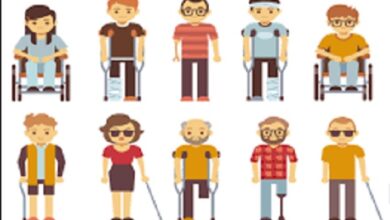Dislalia definition symptoms reasons classification diagnostic correction
Dislalia ( tongue-tied )
Dislalia – these are various defects in sound pronunciation in people with normal hearing and intact innervation of the articulatory apparatus. Dislalia is manifested by the absence, substitutions, mixing or distortions of sounds in oral speech. With Dislalia, a speech therapy examination of the structure and mobility of the speech apparatus, the state of sound pronunciation and phonemic hearing is carried out, if necessary, consultations of a dentist, neurologist, otolaryngologist. Speech therapy for Dislalia includes 3 stages: preparatory, the formation of primary pronunciation skills, the formation of communication skills. In this article we will give you the definition of Dislalia.
General information
Dislalia is a violation of the normalized pronunciation and use of speech sounds, not associated with organic damage to the central nervous system or hearing organs. Dislalia is the most common speech disorder in speech therapy , which occurs in 25-30% (according to some data – in 52.5%) of preschoolers (5-6 years old), 17-20% of primary schoolchildren (grade 1-2) and 1 % of older children. In recent years, polymorphic disorders of sound pronunciation have become predominant in the structure of Dislalia, which prevent further normal mastery of written speech and contribute to the occurrence of dysgraphia and dyslexia .
The reasons
Causes of mechanical Dislalia
At the heart of the wrong pronunciation in mechanical Dislalia are organic defects of the peripheral articulatory apparatus (tongue, lips, teeth, jaws). Among the abnormalities in the structure of the tongue and lips, leading to Dislalia, there are:
- short frenum of the tongue or upper lip. With a shortened sublingual ligament, the pronunciation of upper lingual sounds suffers first of all.
- macroglossia (massive, tongue), microglossia (narrow, small tongue). Macro– and microglossia are usually observed in children with general physical or mental underdevelopment.
- thick, inactive lips. In case of lip anomalies, defects in lip and labiodental sounds are noted.
Anatomical defects of the dentition, causing mechanical Dislalia, can be congenital in nature or arise as a result of diseases and injuries. Defects in the structure of the bone base of the speech apparatus are presented:
- wrong bite ( deep , cross , open , progeny, prognosis);
- anomalies of the dentition ( diastemas , sparsely located or small teeth, etc.);
- high narrow (Gothic) or low flat upper palate.
It should be noted that pronunciation disorders associated with such organic defects of the vocal apparatus as clefts of the upper lip , soft and hard palate are not Dislalia, but rhinolalia .
Causes of functional Dislalia
With functional Dislalia, the structure of the articulatory apparatus is not changed, that is, there is no organic basis for the violation of sound pronunciation. In this case, the causes of Dislalia are unfavorable social or biological factors. Dislalia symptoms reasons and classification
- Social factors : children’s imitation of adults ‘incorrect speech (hasty, tongue-tied, dialectal), adults’ imitation of children’s babbling (“lisping”), cases of bilingualism in the family , pedagogical neglect .
- Biological factors : general physical weakness in frequently ill children , minimal cerebral dysfunction ( MMD ), which contributes to delayed speech development, unformed phonemic hearing, speech patterns and their switching.
Classification
Taking into account the reasons for the violation of sound pronunciation, mechanical (organic) and functional dislalia are distinguished . Mechanical dislalia is associated with defects in the anatomical structure of the articulatory apparatus. Functional dislalia is caused by social factors or reversible neurodynamic disturbances in the cerebral cortex. Functional dislalia, in turn, is subdivided into:
- motor (due to neurodynamic shifts in the central parts of the motor speech analyzer). With motor dislalia, the movements of the lips and tongue become somewhat inaccurate and undifferentiated, which determines the approximate articulation of sounds, that is, their distortion (phonetic defect).
- sensory (due to neurodynamic shifts in the central parts of the speech-auditory analyzer). With sensory functional dislalia, it is difficult to auditory differentiation of acoustically similar phonemes (hard and soft, deaf and voiced, hissing and sibilant), which is accompanied by mixing and replacement of sounds in oral speech (phonemic defect) and the same type of letter substitution in writing.
- sensorimotric . In the case of the simultaneous presence of sensory and motor impairment, they speak of the sensorimotor form of dislalia.
Depending on the lack of formation of certain signs of sounds (acoustic or articulatory) and the nature of the defect (phonetic or phonemic), dislalia is distinguished:
- acoustic-phonemic;
- articulatory-phonemic;
- articulatory-phonetic.
Taking into account the number of disturbed sounds, dislalia can be simple (with incorrect pronunciation of 1-4 sounds) and complex (with defective pronunciation of more than 4 sounds). If the pronunciation of sounds from one articulatory group is impaired (for example, only hissing or whistling sounds), they speak of monomorphic dislalia ; if from different articulatory groups (for example, sibilant and sibilant at the same time) – about polymorphic dislalia.
Phonetic defects in the pronunciation of sounds of different groups (distortions) in dislalia are usually denoted by terms derived from the letters of the Greek alphabet:
- Rotacism – deficiencies in pronunciation [p] and [p ‘]
- Lambdacism – deficiencies in pronunciation [l] and [l ‘]
- Sigmatism – deficiencies in the pronunciation of sibilants [w], [w], [w], [h] and sibilants [s], [s ‘], [h], [z’]
- Jotacism – deficiencies in pronunciation [th]
- Gammacism – deficiencies in pronunciation [g] and [g ‘]
- Cappacism – deficiencies in pronunciation [k] and [k ‘]
- Hitism – deficiencies in pronunciation [x] and [x ‘]
- Defects of voicing and stunning – replacing voiced consonants with paired voiceless ones and vice versa
- Defects of softening and hardness – replacing soft consonants with paired hard sounds and vice versa
In dislalia, complex combined defects are common (sigmatism + rotacism, lambdacism + rotacism, sigmatism / rotacism + mitigation defects, etc.).
In the event that dislalia has a phonemic defect (replacement of sounds), the prefix “para-” is added to the name of the lack of sound pronunciation: pararotacism, paralambdacism, parasigmatism, parayotacism, paragammacism, paracappacism, parachitism.
Dislalia symptoms
Defects in sound pronunciation in dislalia are represented by omissions, substitutions, mixing and distortion of sounds.
- Sound skipping – its complete loss in one position or another (at the beginning, in the middle or at the end of a word).
- Sound replacement is a persistent replacement of one sound with another, also present in the phonetic system of the native language. Sound substitutions are caused by the nondiscrimination of phonemes by subtle articulatory or acoustic features. With dislalia , sounds can be replaced that are different in the place of articulation or the method of formation, according to the sign of voiced-deafness or hard-softness.
- Mixing sounds – the child constantly confuses two correctly pronounced sounds in the speech stream (that is, he uses them either appropriately or inappropriately). In this case, the dislalia mechanism is associated with the incomplete assimilation of the phoneme system.
- Distortion of sounds is an abnormal pronunciation, the use of sounds in speech that are absent in the phonetic system of the Russian language (for example, velar or uvular pronunciation [p], interdental or lateral pronunciation [s], etc.). Distorted sounds are commonly found in mechanical dislalia.
With functional dislalia, as a rule, the pronunciation of one or more sounds is impaired; in the case of mechanical dislalia, a group of sounds similar in articulation. So, an open anterior bite will contribute to the interdental reproduction of sounds of anterior lingual articulation ([h], [s], [c], [h], [g], [w], [u], [d], [t], [ l], [n]), because the tip of the tongue cannot be held behind the front teeth.
The lexical and grammatical side of speech in dislalia is formed in accordance with age: there is a sufficiently developed vocabulary base, the syllable structure of the word is not distorted, the case endings, singular and plural are used correctly, there is a sufficiently high level of development of coherent speech.
Along with the pathological forms of dislalia in speech therapy, the so-called physiological dislalia, age-related inarticulateness or physiological imperfections of speech, caused by age-related imperfection of phonemic hearing or movements of the organs of articulation, are distinguished . Such disadvantages of sound pronunciation normally disappear on their own by 5 years.
Diagnostics
Diagnostic examination of speech in dislalia begins with clarifying the characteristics of the course of pregnancy and childbirth in the mother, past diseases in the child, early psychomotor and speech development, the state of biological hearing and vision, the musculoskeletal system (according to medical documentation). Then the speech therapist proceeds to the study of the structure and mobility of the organs of the articulatory apparatus by visual inspection and assessment of the performance of a series of imitation exercises.
The actual diagnosis of oral speech in dislalia includes an examination of the state of sound pronunciation and the identification of defectively pronounced sounds using the appropriate didactic material. In the process of speech therapy examination, the nature of the violation (absence, replacement, mixing, distortion of sounds) is revealed in various positions – in isolation, in syllables (open, closed, with a confluence of consonants), words (at the beginning, middle, end), phrases, texts. Then the state of phonemic hearing is checked – the ability for auditory differentiation of all correlated phonemes.
The speech therapy conclusion reflects the form of dislalia (mechanical or functional), the type of dislalia (articulatory-phonemic, acoustic-phonemic, articulatory-phonetic), a kind of incorrect pronunciation (rotacism, sigmatism, etc.).
Differential diagnosis
With mechanical dislalia, the child may need to consult a dentist ( dentist-surgeon , orthodontist ); with functional dislalia- a pediatric neurologist . To exclude hearing loss , a consultation with a pediatric otolaryngologist and a study of the function of the auditory analyzer is carried out . Differential diagnosis of dislalia, first of all, should be carried out with erased dysarthria .
Dislalia correction
The work on the correction of dislalia is built in accordance with three stages of work: the preparatory stage, the stage of the formation of primary pronunciation skills and the stage of the formation of communication skills.
- Preparatory stage. With mechanical dislalia, it is necessary to eliminate anatomical defects in the structure of the articulatory apparatus ( plastic surgery of the frenum of the tongue or upper lip , a course of orthodontic treatment ). With motor functional dislalia, speech motor skills are developed ( articulatory gymnastics , logomassage ); with sensory functional dislalia- the development of phonemic processes. Also, for correct sound pronunciation, it is important to form a directed air stream, develop fine motor skills , and practice the pronunciation of reference sounds.
- The stage of the formation of primary pronunciation skills. Includes the production of an isolated sound (by imitation, with mechanical assistance, that is, using speech therapy probes or in a mixed way); automation of sound in syllables, words, sentences and texts and differentiation of sounds (when they are mixed).
- The stage of the formation of communication skills. At the final stage of dislalia correction, skills are formed for the error-free use of worked out sounds in all communication situations.
Speech therapy classes to correct dislalia should be carried out regularly, at least 2-3 times a week. It is important that speech therapist and articulation exercises are also performed at home. Duration of classes for simple dislalia- from 1 to 3 months; with complex dislalia – 3-6 months.

